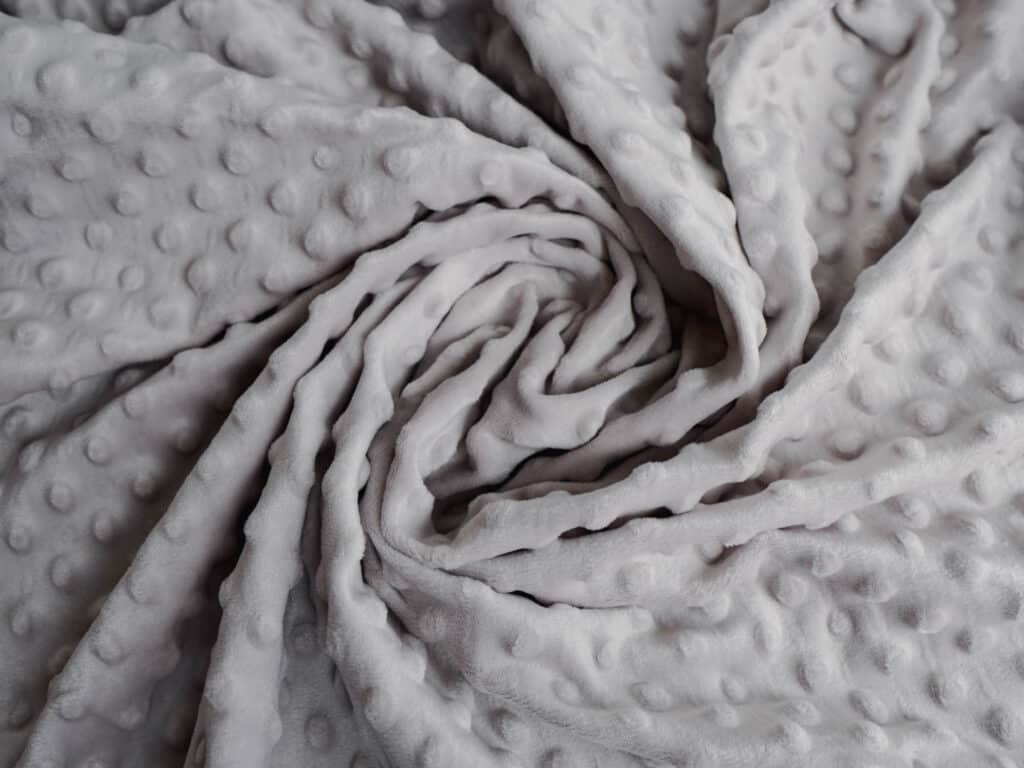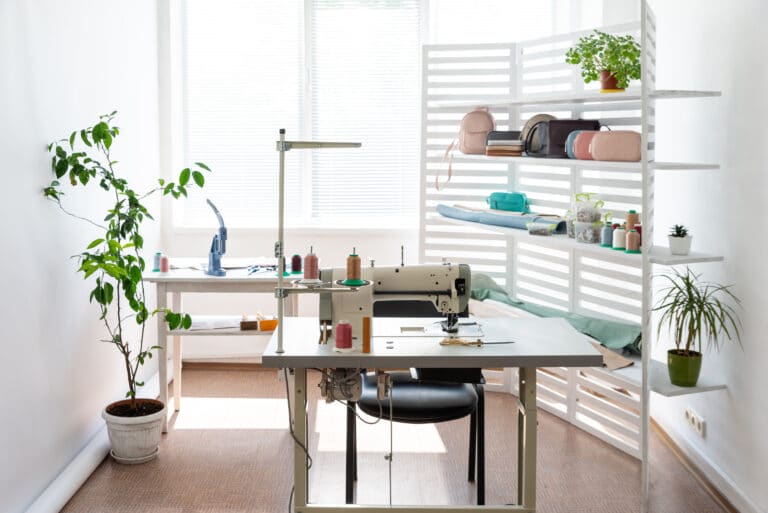9 Best Fabrics For Plushies & Stuffed Toys (2023)
Some of the links below are affiliate links. As an Amazon Associate I earn from qualifying purchases. This means that, at zero cost to you, I will earn an affiliate commission if you click through the link and finalize a purchase.
Whether you’re looking to purchase a stuffed animal or make one for a loved one, it’s important to understand the different types of fabrics available and which one is best.
The best fabric for stuffed animals is cotton because it is the most durable, easy to clean and soft. If you’re looking for something softer, then faux fur or Minky is a great alternative.
While cotton is the best fabric to use for a stuffed animal, you may also want to consider some alternatives depending on the use of the animal, who it’s for and the effects you’re trying to create.
For example, a bear that is going to be displayed would require a more durable and longer-lasting material whereas a stuffed animal made for a child may require something soft and snuggly.
1. Cotton
👍 Good: Versatile making it good for beginner sewing projects & available in multiple colours and prints.
👎 Bad: Not the most durable fabric available & can experience pilling or bobbling.
Cotton is a popular choice for most beginner sewing and craft projects as it has very little movement when sewing (unless on the bias) making it easy to work with.
As cotton is a woven fabric it’s strong, durable and perfect for stuffed animals that are being made to last.

However, despite the strength of the material, cotton is also very versatile in the sense that you can find it in several weaves such as;
- Polycotton which is lighter and thinner to use
- Cotton drill which is heavier and thicker
- Quilting cotton which is medium-weight and medium-thickness.
Another benefit of using cotton fabric for a stuffed animal is that you can find it in a wide range of colours and animal patterns. As such, you’re likely to find something to suit any type of cuddly toy that you’re looking to create.
Better still, the patterns on cotton fabric are always sharp and strong in colour, and typically maintain this even after several washes.
2. Loopback Jersey
👍 Good: Soft, cuddly fabric that is comfortable against skin.
👎 Bad: Can sag over time & the stretchiness may make it trickier to sew for beginners.
Loopback Jersey is a soft and cuddly fabric making it perfect for stuffed animals. The fabric consists of loops on one side and soft piles of yarn on the other.

This fabric is very similar to French Terry and sweatshirt fabric in that it is soft and comfortable.
One drawback to using a loopback jersey fabric is that it’s stretchy which can be a little harder to use. However, this means that the fabric can maintain its shape both when sewing and when washing.
You can find loopback jersey fabric in a variety of colours, however, you may find it’s a little more expensive than other fabrics on this list.
3. Flannel
👍 Good: Soft, warm and cosy fabric typically made from natural materials.
👎 Bad: Can shrink when washed & may pill / bobble over time.
Flannel is another woven fabric, usually made from natural materials such as cotton or wool, making it a great fabric for soft toys. However, unlike the majority of cotton blends, flannel typically resembles the texture and structure of brushed cotton.

Made with a technique known as ‘napping’ this fabric has a slightly fuzzy texture, making it warm, cuddly and thick.
As flannel is soft but strong it is a great choice of fabric for sewing teddy bears and other soft toys. If you are looking for a similar style to flannel but not as thick, brushed cotton is a great alternative.
4. Interlock Knit Fabric
👍 Good: A double-knitted sturdy fabric that’s ideal for durable soft toys.
👎 Bad: Can stretch out of shape & requires careful sewing.
Interlock Knit is a double-knit fabric made as a result of using two needles instead of one. This is also known as a double knit construction, similar to a jersey knit except both the front and back of the fabric look the same.
As interlock knit is a style of construction, the type of fabric can vary with the most popular being; cotton or polyester.

Interlock Knit fabrics are extremely soft, absorbent and firm which can be both a benefit and a drawback when used for stuffed animals.
The firm and soft nature of the material is perfect for creating soft cuddly creatures but as the fabric is super absorbent it can hold a significant amount of water, taking longer to dry from washing.
The benefit of using interlock knit fabric for stuffed animals is that it is double sided so you can reduce the waste of fabric and not have to worry too much about cutting the pattern exactly.
5. Velboa or Low-Pile Faux Fur
👍 Good: Very soft fabric & less mess when cutting compared to high-pile furs.
👎 Bad: Synthetic origins may mean that it’s not as breathable.
Velboa is a low-pile faux fur fabric and a common favourite amongst crafters for several projects including stuffed animals due to its durability and fur-like texture.

The fabric is 100% polyester which makes it tough and highly durable, despite this Velboa has a soft plush-like texture on one side and a grain-like texture on the other.
Low-pile faux fur fabrics such as Velboa are perfect for making your own cuddly toys as they can come in a variety of colours, patterns and prints including animal prints
6. Faux Suede
👍 Good: Gives a luxurious feel & relatively durable.
👎 Bad: Not as breathable as other fabrics & may be slippery to sew.
Faux Suede is one of the more different fabrics on this list, and is a fabric type not commonly used by crafters for sewing projects.
However, it can be a great choice of fabric for making a stuffed animal or soft toy since it’s both hard working and easy to work with.

The use of faux suede can be dependent on the style of stuffed animal you want to create and the intent – using it to play with for a child may not be the best fit.
Faux suede is made from a polyester microfiber woven into a thin, very tough but soft fabric. The polyester and plastic materials within the fabric make it much more durable than the natural fibers of suede.
7. Minky
👍 Good: Extremely soft, plush-like texture.
👎 Bad: Can be slippery to sew, might be pricier than some alternatives.
Minky is a type of polyester fabric that is widely popular for making everything from soft toys and stuffed animals to cuddly blankets.
The fabric itself is a microfiber fabric made from polyester that is knitted into varying weights and pile heights so you can find several varieties when shopping for your stuffed animal project.

The soft cosy nature of the fabric is more than suitable for creating soft toys either using a sewing machine or stitching by hand.
However, the downside of making your own plushies using Minky plush fabric is that it stretches which can make it difficult to work with, especially for beginners.
8. Fleece
👍 Good: Warm, soft & easy to sew.
👎 Bad: Can pill / bobble over time, potential static build-up.
Fleece like many other fabrics on this list has a certain level of cosiness and comfort to it. While you might instantly think of sheep and wool, most fleece fabric on the market is actually made from polyester.
However, this can actually work in your favour on a project where you want both durability and softness.

There are several varieties and thicknesses you can get of fleece but overall it is great for using on projects to make baby blankets, cushions and of course soft toys.
Fleece is easy to work with and has a little stretch to it so it’s perfect for making cuddly soft toys.
9. Brushed Cotton
👍 Good: Soft texture and very breathable.
👎 Bad: Can wrinkle easily & the colours might fade over time.
Brushed cotton is very similar to flannel in terms that it is cotton-based and soft.
However, it’s made from a combination of fabric structures and brushed to remove any excess lint. This leaves the fabric with just one soft side.

The best thing about burshed cotton is that it’s thin and incredibly easy to work with. However, it’s also prone to shrinking over time, especially as a result of the heat from the washing machine and tumble dryers.
As such, if you do decide to make a soft toy from brushed cotton you’ll want to provide thorough care instructions.
Frequently Asked Questions
Have you still got questions about the kinds of fabrics that are best for soft toys? Here are some of the most frequently asked questions people have.
What Fabric is Best For Soft Toys?
The best fabric for stuffed animals is cotton because it is the most durable, easy to clean and soft. However, fleece is also a great alternative.
What Should You Consider When Deciding on a Fabric For Soft Toys?
With many fabric choices available for soft toys, it’s important to consider the different factors, and which are most important to you as the crafter, and the intended final product recepient.
These factors include;
- Safety: Non-toxic, hypoallergenic.
- Texture: Softness, plushness.
- Durability: Wear resistance.
- Ease of Sewing: Fraying, stretching.
- Appearance: Patterns, colors.
- Maintenance: Care instructions.
- Environmental Impact: Sustainability, biodegradability.
- Cost: Price per yard/meter.
- Intended Use: Toy’s purpose.
- Sensitivities: Allergic reactions.
- Availability: Sourcing ease.
Can You Use Old T-Shirts to Make Soft Toys?
Yes, you can use old t-shirts to make soft toys. These soft toys are typically known as ‘memory bears’ and are a great way to remember a particular person or event.
What is The Best Stuffing For Soft Toys?
The best stuffing for soft toys is polyester fibrefil as it’s hypoallergenic, durable, easily available, retains its shape well, is washable, and provides a soft yet resilient feel.



